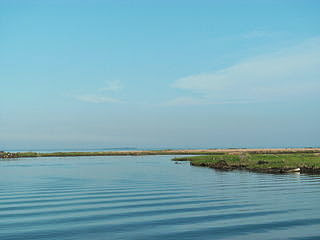 |
| Photo by Albert Herring |
The first known European to visit Tangier Island is John Smith in 1608. He named Tangier and another island in the bay Russell Isles after a Doctor Russell, who was on the ship with him. A storm forced his crew to seek shelter on one of the islands, but his diary is unclear as to whether it was Tangier. At the time, he stated the islands were unoccupied.
In 1644, paramount chief Opechancanough led an organized attack against the colonists like he had on March 22, 1622 because of their encroachment on the Powhatan chiefdom's land. Again he carried out the attack in typical Indian fashion by striking as quickly and as hard as possible, then retreated. Like the previous attack, hundreds of colonists were killed. Because there were many more colonists in 1644, his attack had less impact.
In retaliation, Governor Berkeley led strikes against the tribes in July 1645. They took many prisoners, and in August, the Virginia Council decided that all male prisoners over the age of eleven were to be abandoned on Tangier Island, in order "to prevent their returning to and strengthening their respective tribes." Berkeley used his own ship to transport the prisoners to Tangier. What became of them is unknown.
In the 1670s, two colonists used Tangier for grazing livestock. The historical record is unclear whether they actually lived on the island themselves or not, but it's generally believed they did not. Those who inhabit the island say the first permanent settlement was in 1686. Around 500 people live there today. Some claim their accent goes back to Elizabethan times. While there may be some remnants, the language has evolved since colonial times. Sadly with global warming and rising sea levels, Tangier Island will be claimed by the sea sometime in the next 50 to 100 years. I hope to make a research trip to the island this summer.
Kim Murphy
www.KimMurphy.net